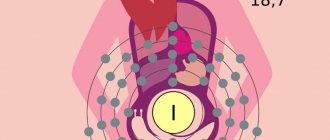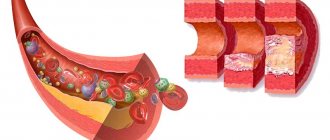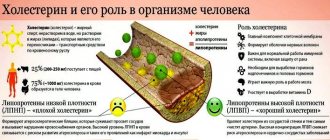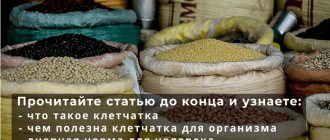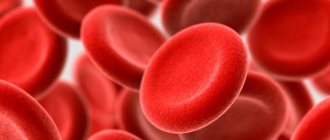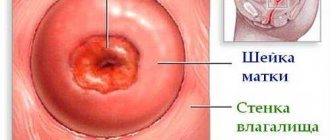When animal fats predominate among the food consumed, the amount of bad cholesterol increases significantly. It is deposited on the walls of blood vessels, which leads to narrowing of the arteries. Because of this, a number of cardiovascular and brain diseases arise, such as angina pectoris, myocardial infarction, ischemic stroke and many others. That’s why it’s so important to monitor your diet, says Joinfo.ua. You should not overeat and avoid animal fats as much as possible.
What are the normal indicators?
Normal levels of cholesterol in the blood differ both by age and gender. The norms for an adult are: - Men: total cholesterol 3.5-6.0; LDL – 2.02-4.79; HDL – 0.72-1.63, triglycerides – 0.5-2.0 millimol/liter. — Women: total cholesterol 3.0-5.5 LDL – 1.92-4.51; HDL – 0.86-2.28, triglycerides – 1.5 millimol/liter.
As follows from the above, you can regulate the levels of LDL and HDL in the blood by changing your diet. We present to your attention a list of foods that help maintain healthy cholesterol levels in the human body.
Not all lipoproteins are created equal
Cholesterol does not dissolve in liquid. Fat molecules are carried throughout the body along with the bloodstream, bound to proteins. This combination of proteins and fats is called lipoproteins.
There are several main categories of lipoproteins:
- High-density lipoprotein (HDL) is considered “good.” HDL carries excess cholesterol back to the liver, which removes excess cholesterol from the body.
- Low-density lipoproteins (LDL) are called "bad" proteins. These complexes of molecules transport cholesterol from the liver to various organs of the body. When LDL becomes too high, the excess cholesterol is deposited on the walls of blood vessels in the form of dense plaques, impairing blood flow. Deposits on the walls of blood vessels cause the disease atherosclerosis and can ultimately lead to death.
- Very low-density lipoproteins (VLDL) primarily serve as a carrier for triglycerides, another form of fat in the body. A large amount of VLDL is also associated with the risk of developing atherosclerosis.
Garlic and onion
Garlic and all members of the onion family - green, red, yellow - have the ability to keep cholesterol levels under control. In addition, experts believe that the large amount of garlic used in the Mediterranean diet makes it one of the healthiest diets for the heart. It’s not for nothing that our ancestors claimed that eating just one clove of “fragrant” vegetable a day thins the blood.
Table of cholesterol content in food
Every person who monitors their cholesterol and keeps its level under control needs to know about the content of this component in certain products. We provide a table showing the main foods and the amount of cholesterol in them.
Navigating products has now become even easier. Every person, regardless of cholesterol level, will be able to adjust their diet, thereby having a positive effect on the body. Follow our advice and stay healthy.
Fruits
Generally, all fruits and vegetables contain antioxidants and help lower cholesterol levels. But two groups of them are the main enemies of the harmful substance. The first is rich in vitamin C (oranges, grapefruits, lemons, berries, guavas, mangoes, all types of Brussels sprouts, broccoli, Chinese and others, sweet peppers). And the second, which contains beta-carotene (all yellow fruits such as apricots, peaches, mangoes, as well as pumpkin, sweet potatoes, carrots, all dark green vegetables - cabbage, sorrel, spinach).
Additional foods prohibited for high cholesterol
- Fermented milk products with high fat content - whole milk, cheeses, cottage cheese, sour cream, kefir. If the product is low-fat, you can eat it. Then it will not cause harm, only benefit.
- Fresh bread, pancakes and especially fried pies, which are favorites in the fast food aisles. It is better to exclude such delicacies until metabolism is completely restored and not to consume them often in the future.
- Pizza is not a recommended product due to harmful ingredients, in particular mayonnaise, cheese and sausage. Despite this, if you wish, you can prepare the “correct” pizza, which will consist of vegetables and herbs.
- Garlic, mustard, fresh onions, sorrel and spinach greatly irritate the gastric mucosa, so they are not recommended for metabolic disorders. Also, these products should not be eaten during exacerbation of chronic diseases of the digestive system.
- Almost everything from cereals is allowed, except semolina porridge (if it was prepared with milk).
- It is better to replace candied dried fruits with traditional ones.
- It is not advisable to drink strong black tea. It is better to replace it with green or white tea, as well as rosehip decoction.
As for the method of cooking food and its heat treatment, frying and smoking are strictly prohibited. You can boil, stew and steam. If it is difficult for a person to immediately switch to dietary boiled dishes, as an alternative, meat or fish can be baked under foil until golden brown. The taste of such dishes will be no worse than grilled or frying.
It is important to know! Doctors recommend that people with cardiovascular diseases switch to vegetarian food, since fiber is more healthy and easily digestible, unlike harmful animal fats. At first, such a diet may be unusual for a person, but after a few months the body adapts to such a menu, and the patient himself will feel an improvement in his condition.
Fish
Numerous studies show that regular consumption of fish reduces the risk of cardiovascular diseases several times. This is due to their high content of omega-3 fatty acids. The best choices are salmon, sardines, trout, tuna, herring, and mackerel. However, this does not mean that other types of food do not provide health benefits. Just remember that omega 3 reduces the risk of ventricular arrhythmia, atherosclerosis, cholesterol, blood pressure and myocardial infarction. And its highest content is in fatty varieties of marine and oceanic inhabitants.
Where is good cholesterol found?
Products for lowering cholesterol are presented in nutritionist tables. Thus, in order to bring this indicator back to normal, you need to follow a dietary diet.
It is important to understand that you cannot completely give up fats, because the body needs them for normal functioning. Instead, the main goal of such a diet will be to eliminate bad fats and replace them with good ones. It is very useful to eat carrots. It will help normalize cholesterol. You can make stews and puree soups from carrots. It is also very useful to drink freshly squeezed homemade juices from this vegetable.
An additional advantage of eating carrots is its beneficial effect on the liver, kidneys and heart.
The next vegetable with good cholesterol is tomatoes and their juice. They contain a lot of potassium, which maintains heart muscle tone.
Fatty fish must be on the menu. It is rich in healthy fatty acids, which quite successfully overcome cholesterol deposits in blood vessels. You can make steamed cutlets and casseroles from fish. Decoctions and soups made with fish broth are not recommended.
In this diet, fish should be the main source of protein. It is well absorbed and easily digested, so it can be eaten even with diseases of the digestive system.
Regular consumption of fish improves the functioning of the cardiovascular and nervous systems.
Nuts. According to research by scientists, people who ate a handful of almonds daily had a 10% drop in cholesterol after just two months. In addition, nuts are rich in healthy fats and vitamins. They can be used as an additive to main dishes, or simply consumed as a whole.
For sweets, dried fruits and honey are allowed in limited quantities.
Drinks allowed include fruit compote, juices, fruit drinks and herbal teas.
This menu must include greens: spinach, lettuce, dill, parsley, green onions.
Additional products that help reduce cholesterol deposits in blood vessels are:
- Garlic and onion. These vegetables are famous for their anti-cholesterol effects. With their regular use, you can really cleanse blood vessels and also strengthen the immune system. The main contraindications to consuming garlic are acute diseases of the stomach, liver and intestines. It should also be noted that by consuming raw garlic regularly, a person can increase their good cholesterol levels by more than 35%.
- Legumes (beans, soybeans, lentils, peas). These vegetables are rich in B vitamins and protein. They are an excellent substitute for meat, so they are recommended in this diet. In general, legumes are considered those vegetables that can saturate the body well, without overloading it with harmful fats. Beans and peas can be included in your diet almost every day.
It is also important to know that legumes contain pectin, which helps actively remove bad cholesterol from the body.
- Oatmeal, as well as cereal bran, are excellent for removing cholesterol. It is also useful to make cookies and bread from bran. They act using the “brush” method in the human body and blood vessels.
- Fresh apples and their juices can be taken daily. It is also recommended to eat citrus fruits (lemons, oranges, grapefruit, tangerines).
- Red meat (beef) maintains normal cholesterol levels. The main thing is to consume exclusively boiled beef without adding salt.
- You should drink green tea every day. It will perfectly cleanse blood vessels, improve heart function and enrich the body with vitamins. There are practically no contraindications to its use. Sugar should not be added to green tea. It is better to replace it with honey.
- Eat avocado. It is rich in healthy fats and vitamins.
- Of the oils, preference should be given to vegetable oils - olive, flaxseed, sesame. They can be added to salads as a dressing, as well as to main dishes.
In addition, in addition to eating healthy foods, it is very important to follow the following nutritional recommendations, thanks to which you can achieve a lowering effect on cholesterol:
- It is necessary to reconsider the principle of cooking. Thus, boiling, steaming, stewing and baking are allowed in this dietary food. At the same time, frying and grilling are strictly prohibited.
- There should be three full meals a day and two or three light snacks of fruits and nuts. Fasting is not allowed, just like skipping meals.
- The last meal should be two hours before bedtime.
- Dishes should be consumed at the optimal temperature. They should not be too hot or cold, as this makes the process of digestion more difficult.
- Every day the menu should include dishes from vegetables, fruits and cereals. This is the basis of this diet and should not be violated.
Products containing phytosterols
These are sterols that are found in plant foods and have demonstrated excellent ability to reduce bad cholesterol levels in the blood. These include avocados, nuts and seeds.
The exotic fruit contains the most phytosterols. Its daily consumption for several weeks can reduce the level of bad cholesterol by 7-8%, and triglycerides by 15%.
In addition to avocados, eating sesame seeds, wheat germ, brown rice bran, pistachios, flax seeds, pine nuts, and almonds will be beneficial. Regular inclusion of all these foods in your diet helps reduce bad cholesterol and increase good cholesterol.
You can control your blood cholesterol levels by simply changing your diet. But besides this, folk remedies that nature has generously endowed all of humanity always come to the rescue. The most important thing is not to sit idly by, but to start changing your life for the better right now.
Photo: pixabay, pexels
Foods that lower cholesterol
Are there any anti-cholesterol foods? When cholesterol is high, doctors prescribe medications that block the liver's production of this substance. But some foods also have the ability to reduce levels of blood fats or harmful LDL lipoproteins.
First of all, these are foods rich in fiber, which is not digested in the stomach and intestines. Cholesterol is used by the liver to produce bile, while its excess is absorbed in the intestines and used to produce new bile. Water-soluble plant fiber has the ability to absorb bile, thereby reducing cholesterol production.
Foods rich in water-soluble fiber:
- Oats, oat flakes
- Barley
- Beans, peas, lentils
- Brown rice
- Eggplant
- Carrot
- Flax seeds
- Apples
- Grape
- Citrus
You can also take over-the-counter dietary supplements that contain water-soluble fiber.
Natural cholesterol blockers:
- Red onion and garlic
- Ginger
- Radish
- Green tea
- Cocoa and dark chocolate
Milk and dairy products
Is it possible to drink milk if you have high cholesterol? If its fat content is less than 3%, then it is possible, but little by little. 1% kefir or yogurt from skim milk is better. Yoghurts are only those that contain nothing but milk and sourdough. Dairy and cream ice cream are excluded.
You can’t eat sour cream, but you can add half a spoon to the dish. For example, in a salad of carrots, or tomatoes with herbs.
Cottage cheese with even 9% fat content is possible, but if you make it yourself, first skim off the cream and then add the starter. Fatty varieties of cheese - very limited! Sausage cheese and processed cheese are excluded.
Butter, as well as ghee and margarine, are prohibited. Spreads contain much more substances harmful to health than regular butter.
